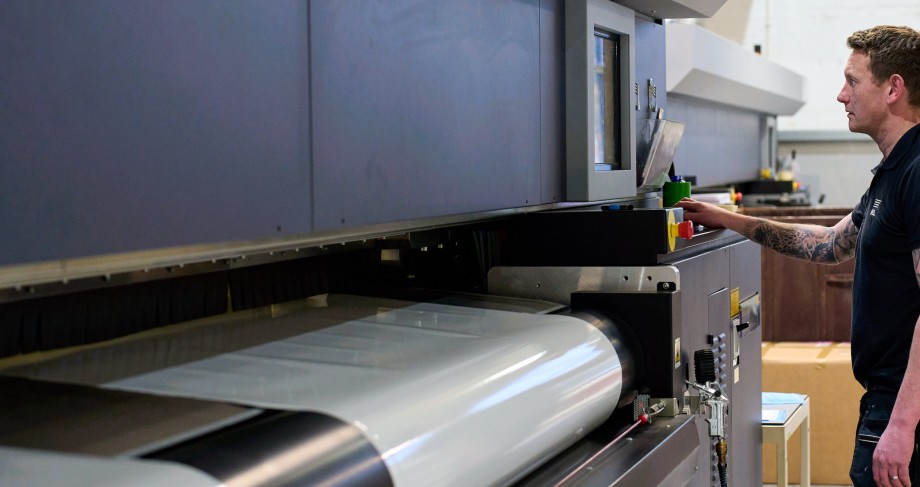Dye Sublimation vs UV Ink
When it comes to printing of large format graphics, there are a variety of technologies available for producing high-quality images.
Two popular options are dye sublimation and UV ink printing. While both methods have their advantages, they differ significantly in how they create images, the materials they can be used on, and the end results they produce. In this blog, we'll compare dye sublimation and UV ink printing to help you decide which is best for your printing needs.

Dye Sublimation Printing
Dye sublimation printing is a process that involves transferring dye onto a substrate, typically fabric or coated materials, such as metal or plastic. The process works by printing an image onto transfer paper using special dye-sublimation inks. The transfer paper is then placed onto the substrate and subjected to high heat and pressure, causing the dye to sublimate (turn from a solid to a gas) and bond with the surface of the substrate. This creates a vibrant and durable image that is embedded into the material rather than simply being applied to the surface.
Dye sublimation printing has several advantages over other printing methods. It can produce high-quality, photo-realistic images with sharp detail and vivid colours. The process is also very durable, as the dye is embedded into the material and will not fade or peel over time. Dye sublimation printing is commonly used for printing on textiles such as t-shirts, banners, and flags, as well as on coated metal and plastic materials.
UV Ink Printing
UV ink printing, also known as UV direct printing, uses UV-curable inks that are applied directly to the surface of the substrate. The ink is cured (dried and hardened) using UV light, creating a durable and scratch-resistant image. UV ink printing is often used for printing on rigid substrates such as plastic, metal, and glass, as well as on flexible materials such as vinyl and foam boards.
UV ink printing has several advantages over other printing methods. It produces sharp and vibrant images with excellent colour saturation and contrast. The ink is also highly durable and resistant to fading, making it suitable for use in outdoor applications. Another advantage of UV ink printing is its ability to print on a wide range of substrates, including non-porous materials that may be difficult to print on using other methods.
Comparing Dye Sublimation and UV Ink Printing
While both dye sublimation and UV ink printing are excellent options for graphic printing, they differ in several key ways. Here are some factors to consider when choosing between the two:
- Substrate Compatibility
Dye sublimation printing works best on textiles and coated materials such as metal and plastic, while UV ink printing can be used on a wide range of substrates including non-porous materials like glass and metal.
- Image Quality
Dye sublimation printing produces high-quality, photo-realistic images with sharp detail and vivid colours. UV ink printing also produces excellent image quality, but the colours may not be as vibrant as with dye sublimation.
- Durability
Both dye sublimation and UV ink printing produce durable images that are resistant to fading, but dye sublimation is better suited for use on textiles and other flexible materials, while UV ink printing is better for rigid substrates.
Large Format Print from VGL
Both dye sublimation and UV ink printing are excellent options for graphic printing, and the choice between them will depend on your specific needs. Dye sublimation printing is best for producing high-quality images on textiles and coated materials, while UV ink printing is ideal for printing on a wide range of substrates, including non-porous materials. Ultimately, the decision will depend on your desired outcome, substrate, and budget. Get in touch with our knowledgeable staff who will be happy to assist in finding the best solution for your project.
Contact Us.
Ready to get started? Get in contact with our knowledgeable staff who will be happy to assist.
0118 922 1300
[email protected]
268 Elgar Road South
Reading
Berkshire
RG2 0BT
